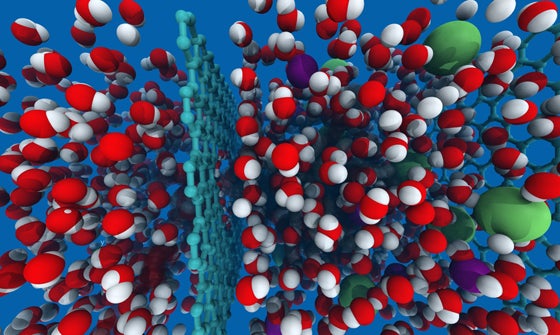Graphene Sheets Can Be Turned Into the Best Filters Ever, For Desalination and Much More
Add another item to the list of things one can accomplish using graphene, the wonder material of the future: Clean...

Add another item to the list of things one can accomplish using graphene, the wonder material of the future: Clean drinking water. Graphene could cheaply and easily remove salt from seawater, potentially turning the oceans into a vast drinking supply for thirsty populations. With properly sized holes, graphene sheets may be able to serve as all-purpose filters.
For desalination, the key is in properly-sized graphene pores that can allow water molecules to pass through but not salt. The ideal size is about one nanometer — even a smidge tinier, three-quarters of a nanometer, is too small for water itself to pass through. The pores are not blocking thick salt crystals, necessarily — they’re blocking the atoms that make up salt.
Graphene is special in lots of ways; one-atom-thick sheets of bonded carbon atoms, it’s the strongest material known, and it has important electronic properties. Its smallest possible bond is about 0.14 nanometers, so it can be hooked together in very tiny configurations, although this is difficult to do. At MIT, materials scientist Jeffrey Grossman and graduate students have been running computer models to determine the right pore size. They may need to bombard graphene sheets with helium ions to make properly-sized pores, or perhaps some nanostructuring techniques to grow the right size sheets. The pores may also need to be treated with other chemicals to make them interact with water molecules.
Once it’s constructed, a graphene water purification system would be fairly simple, at least energy-wise. Modern desalination techniques require vast amounts of energy to force water through porous membranes at very high pressures. But a graphene sheet could filter it passively, interacting with ions in the saltwater. With the same water pressure as regular desalination plants, the graphene system would be hundreds of times faster, according to Grossman — or it could work at much lower pressure, and therefore lower cost.
[ACS Nano Letters via MIT News]